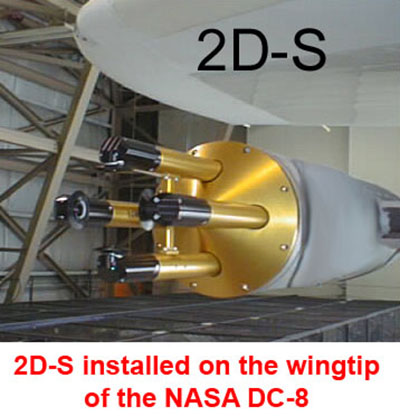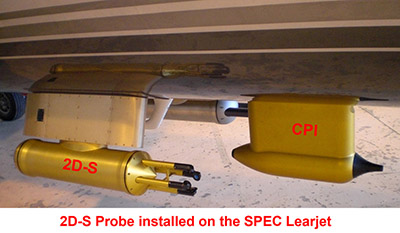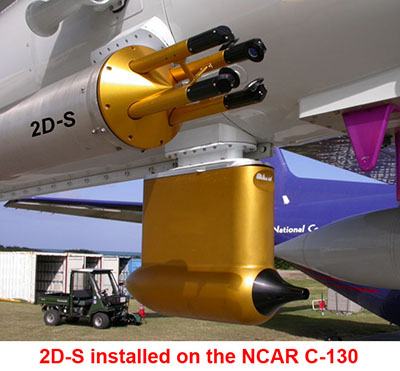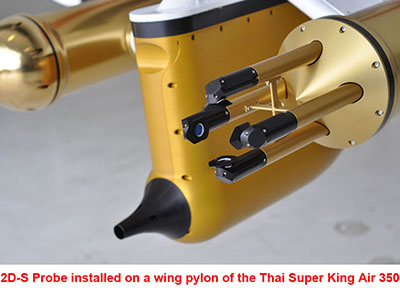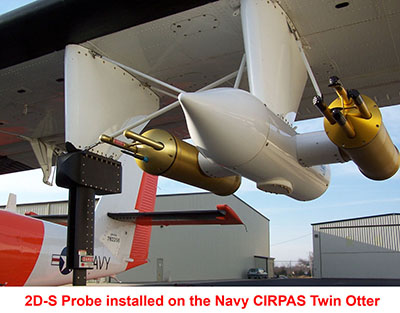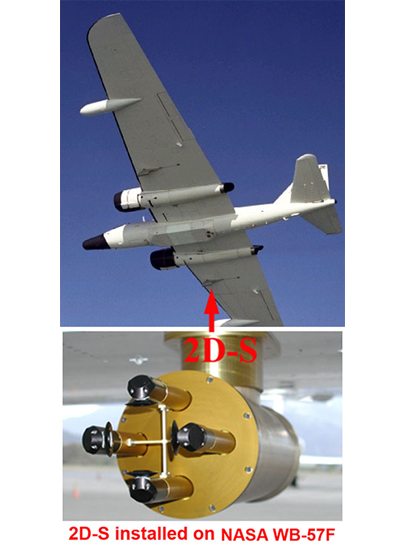2D-S (Stereo) Probe
Optional page type selection for this item:
Instrumentation
Image for Instrumentation or Services Page:
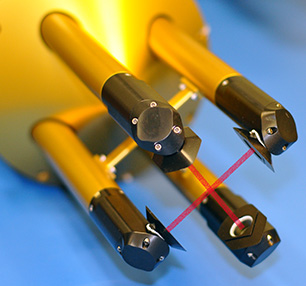
Highlights of the 2D-S (Stereo) Probe
- Two 128-photodiode linear arrays work independently as high-speed and high-resolution optical imaging probes.
- Captures two-dimensional images of particles passing through sample volume where laser beams overlap.
- The region where the beams overlap uniquely defines the depth-of-field (and thus the sample volume) for small particles.
- Response time is 10 times faster than the 2D-C.
- Particles as small as 10 microns imaged at 200 m/s.
- Greatly improved determination of sample volume and sizing of small particles less than 100 microns.
- Data rates up to 13 MB per second, compressed into binary file.
- Fits in standard PMS 2D canister and uses standard wiring.
Operation and Data Analysis
- 2D-S is extremely easy to use. Turning on power to the probe automatically starts communication with the computer. Recording a data file is as easy as one button. Real-time software displays to the operator housekeeping data and a small sampling of the particles recorded. Artificial Intelligence parameters keep the instrument operating at its best, making the instrument almost hands-free with little necessary oversight. The 2D-S has been deployed on the NCAR C-130, SPEC Lear, NASA WB57, UND DC-8, and National Research Council (Canadian) Convair.
- SPEC's 2D-S data analysis software can calculate particle by particle dimensions yielding concentrations, extinctions, particle size distributions, ice water contents, and other microphysical properties.
Click HERE to see papers showing how 2D-S data are used in Scientific Analysis

Large crystals observed by the 2D-S in upslope cloud at -9 °C.

